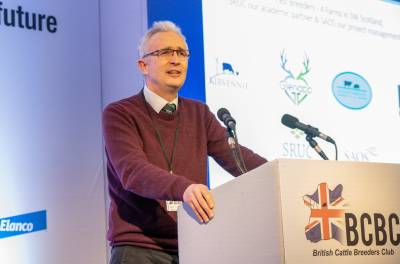
FastBreeders is a collaboration between four progressive farmers. Highly educated and with years of experience and professional development the group share the same vision for resilient dairy systems. Their operations can exploit economies of scale, benefit from increased selection intensity in donor animals and build resilience because genetic material can move freely. Their assets include 8900 genotyped cows/heifers, their ovaries and access to relevant previous production and other farm records. All calves are now genotyped routinely, and a Fastbreeder Index used to select those cows to breed the next generation of replacements. These animals are mated to a panel of bulls specially selected for use in grazing environments using an Australian programme called Matesel. Animals to be culled from the herd to make way for replacements are identified by a culling tool called Cows Own Worth (COW). The top 25% selected to breed replacements are mated to sexed semen and the remainder to beef semen. All cows and calves are weighed regularly leading to a datafile of over 100,000 cow weights.
The motivation is to rapidly improve dairy cows on environmentally balanced systems for maximum utility in that specific environment. Key targets include improved profit, reduced environmental impact, faster genetic gain, increased herd fertility, more sustainable methods of dairy production and the development of a new disruptive commercial breeding method, supported by a genomic predictor tool and a culling tool.
The technical challenge is in achieving rapid rates of female genetic improvement for dairy cows that thrive on UK pasture systems. The aim is to replace the less efficient 75% of cows with superior genetics present in animals from the top 25% over three years. The limiting factor is the reproductive success of IVF, its cost, and the slow rate of genetic gain for UK specific pasture-based systems available from current unsuitable/unproven AI sires.
In Fastbreeder herds (representative of all UK dairy farms that practice crossbreeding), the selection objective is kg fat plus protein per kg cow liveweight within a mating window of 24 days. Cows in these herds range in liveweight from 450kg to 600kg to optimise cow efficiency since their grazing activity costs energy proportional to their liveweight. As such, smaller and more fertile crossbred cows are favoured leading to smaller beef (and dairy) calves.
Holstein dairy cows have been getting bigger over the last 20 years and the national average is now somewhere around 650kg. It is difficult to estimate accurately because almost no cow weighing occurs on farm. Over the last 5 years there has been a dramatic and large scale move towards using sexed semen in the dairy herd such that now over 70% of all inseminations are by sexed bulls. This means dairy farmers have additional cows available to breed to beef bulls and over 60% of all UK beef originates in the UK dairy herd.
The group have a very audacious goal to nearly double the solids output of the cows from the same type of cow specially adapted to a grazing environment and keep the cow size appropriate. This goal is 1.5kg milk solids per kg cow body weight. The process of coming together into a group has helped create focus on breeding, created experience and data exchange, allowed purchases to be grouped and created a research culture attractive to academics. It is truly a coming together of industry and academia to solve a problem of sustainable dairy farming from sun, soil and water.